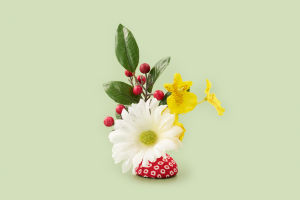Origami, a time-honored art form, carries the childhood memories of countless people.
In many cultures, origami is not only a recreational activity but also a means of introducing education and creativity.
1. Types of Origami
Origami comes in many forms, ranging from simple folds to complex artistic creations. For children, the most common origami forms include:
• Paper boats: Many children remember the sight of paper boats floating on water. Paper boats are one of the simplest origami projects, and their creation is fun yet straightforward. Through folding basic paper techniques, children complete this craft.
• Paper airplanes: The variety in paper airplane designs shows in their shapes and flight paths, with different folds affecting how far or stable the plane flies.
• Animal shapes: Animals are a common theme in origami. Figures like cats, dogs, rabbits, and frogs are often created in origami, offering children a way to improve their manual skills while also sharpening their ability to observe animal forms.
• Flowers and plants: Origami flowers, particularly chrysanthemums and roses, are often made by children as gifts for friends and family. Simple paper flowers not only create beautiful decorations but also foster children's appreciation for aesthetics and creativity.
2. Educational Significance
Through origami, children not only enjoy playing but also gain many useful skills and knowledge.
• Hand-eye coordination: Origami requires coordination between hand movements and visual cues. As children fold paper, they constantly adjust angles and creases, which helps strengthen their hand-eye coordination.
• Improved focus and patience: Completing an origami piece is not easy. Children need to focus on each step and patiently fold along the lines. This process enhances their patience and helps them understand the importance of details.
• Spatial awareness and mathematical thinking: Origami exercises many spatial skills. Through origami, children intuitively grasp concepts such as symmetry, angles, and proportions.
• Boosting creativity: Origami is a highly creative activity. Although many classic origami designs exist, children can creatively transform and improve traditional origami patterns to make new works, which fosters their innovation skills.
3. Conveying Emotions Through Origami
Children use origami to express their feelings and wishes.
• Expressing love and care: Origami hearts, roses, and other shapes often become a way for children to convey love and care to parents and friends.
• Expressing blessings and wishes: On holidays or special occasions, children often use origami to send blessings to others. For example, paper stars symbolize good luck, and paper flowers represent good wishes.
• Sharing the joy of creation: Origami projects often serve as a bridge for children to share with others. Many children enjoy sharing their origami creations with friends, which not only strengthens their social skills but also allows them to experience greater happiness through interaction.
Origami, as a simple yet enjoyable activity, carries the joy and growth of countless children. From paper boats to airplanes, and from animals to flowers, origami brings not only the pleasure of artistic creation but also becomes a cherished part of childhood!
How To Make a Paper Crane - Origami Crane Easy - Step by Step Tutorial
Video by Easy Paper Origami


